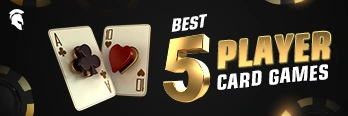You don’t need to be told that poker is a highly popular game across the globe. Or do you? It has been in existence for a long time, and with the emergence of world poker tournaments, televised poker, and online poker games, its popularity has gone to a different level altogether. You have all kinds of people playing this wonderful skill-based game – right from the casual players to the professional ones to the money-minded ones.
Being in existence for so long, this game has a wonderful history behind it. While we are not going to discuss the overall history of the game here, we shall deep dive into an interesting aspect – the suits in cards. When you open any deck of 52 cards, you will observe a total of four suits (spades, diamonds, hearts, and clubs), with each suit containing a total of 13 cards. Have you ever wondered how these suits came into existence? Or what is the history behind having as many as four suits and not more or less?
Let us check out the brief history.
The European Connection
The origin of suits can be traced back to the fourteenth century in Europe, where they got introduced for the first time with playing cards. Most of the people played cards during those days – right from the kings & dukes, to clerics, to prisoners & sailors, to friars & noblewomen, to prostitutes. The earliest suits in cards were identified to be from the Italian-Spanish style, which is now recognized as the Latin suit system. The four suits as per this style were as under:
- Cups (Coppe / Copas)
- Coins (Denari / Oros)
- Clubs (Bastoni / Bastos)
- Swords (Spade / Espadas)
Few historians and scholars believed that the four suits in a deck of cards represented the four different classes of people belonging to the Medieval society in Europe at that point in time – clergy, merchants, soldiers, as well as the farmers.
The cups & chalices (modern hearts) could have represented the clergy, while the swords (spades) might have represented the military or soldiers, the coins (diamonds) stood for merchants, and finally, the batons (clubs) could have represented the farmers or peasants. Many of the Italian decks comprised of 40 cards.
The Italian-Spanish style was supposedly followed by the German-style suits in cards. As per this style, the four styles were as under:
- Hearts
- Bells
- Acorns
- Leaves
The French style for suits followed the German style. This suit system was easy in terms of incorporation on playing cards, and even the manufacturing cost was quite cheap. This led to the rise in popularity of this suit system. The four suits belonging to this system were:
- Spades (Royalty)
- Clubs (Peasants)
- Hearts (Clergy)
- Diamonds (merchants)
In some of the card decks, there was also a fifth suit known as the Leaves or Greens, as seen in the German suit style system. It was during the French revolution that the Ace card became the highest from being considered as the lowest, as the peasants managed to kickstart an uprising and trumped over the royalty.
Entry into English Speaking Nations
The suit system started getting introduced to the English-speaking world from the 16th century onwards. They gained in popularity across the British Empire and eventually reached North America. Soon after, followed the combination of suits that were named as per the Anglo-American pattern. And till date, we are following the same names to identify the suits – hearts, spades, clubs, and diamonds.
The critical thing to note is how each of these suits in cards corresponds to the exact symbols that are used to identify them in a unique manner. And the colour is not unique for each suit – instead, we have red colour used to represent hearts and diamonds, while the black colour represents spades and clubs.
Understanding the Poker Suit Order
Every game of poker assigns an equal rank to all the four suits in cards. There is no suit that is considered higher than the other. Probably the only time, when a suit is considered in poker, is while determining who gets the button first with the dealer dealing one card to each player at the start of action in cash games. You will not see any role played by the suits in determining the best hand between players who have tied.
The Verdict
When you consider suits, the modern ones correspond well to the ones that originated in the fourteenth century. The logic was to relate them to the classes of people that existed back then, but these suits have evolved ever since with them representing different seasons and elements. For example, the hearts denote spring and the element of fire, while the clubs denote summer and the element of earth. On the other hand, the diamonds denote autumn and the element of air, while the spades denote winter and the element of water.
Knowing this brief history of the suits, you will relate more to the suit when you next play the game. Download the poker gaming app like Spartan Poker and start playing now!
















